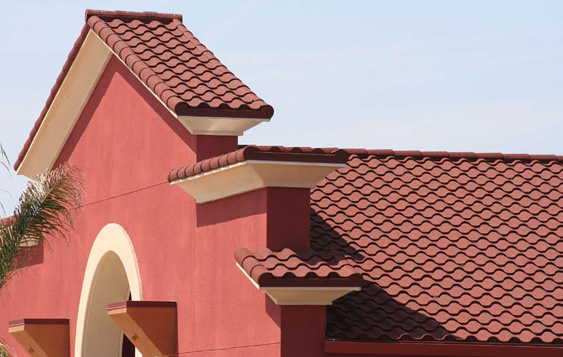 As a roofing contractor, bidding on roofing projects is something that you do regularly. And while you may think you know everything there is to know about how to bid a roofing project properly, we turned to the roofing manufacturers themselves to offer up some tips and advice for how to successfully bid your next roofing project.
As a roofing contractor, bidding on roofing projects is something that you do regularly. And while you may think you know everything there is to know about how to bid a roofing project properly, we turned to the roofing manufacturers themselves to offer up some tips and advice for how to successfully bid your next roofing project.
Involve the Manufacturer
The key to bidding roofing projects is getting the roof manufacturer involved early on in the bidding process.
“The best way for a contractor to enhance their bidding process is to involve their manufacturer,” said Charitie Barnes, an Englert architectural support manager with more than a decade’s experience of working with contractors in the Southeast. “From reviewing the specification prior to bid to easing the burden on post-bid submittals, the manufacturer can be a huge asset in the bidding process. Often we can take a look at the job and find ways that the job was way over or under specified for the building’s design and location. That knowledge alone can give the contractor an edge in dealing with the architect and general contractor, as well as providing a solid number come bid time.”
“Your roof manufacturer has representatives in the field with specialized knowledge about roof properties,” agreed Todd Baker, Berridge Manufacturing Co.’s regional sales manager for the Florida Panhandle, southern Louisiana and southern Mississippi. “Get the roof manufacturer involved in the bidding process as soon and as much as possible.”
 Preparing the Bid
Preparing the Bid
Tony Tiapon, western zone manager for DECRA Roofing Systems Inc., said that it is important to contact the specified product manufacturer early on to find out who the local representative is and to schedule a pre-bid meeting. Make sure to work with the manufacturer representative on the takeoff and special architecture details. “Schedule a job walk with the rep, and provide a list of distributors you’d like to do business with so they can help you quote the project.”
Greg Ortwein, estimating services manager for Firestone Building Products LLC, said that it is important to learn every detail you can about the project before completing the bid. “Request a full set of bid documents, and perform a quantity takeoff so you have a clear understanding of the materials and manpower needed and the associated costs.”
Once you have reviewed the details in the bid documents, it is important to ensure that any specifications are acceptable by the manufacturer, Ortwein said. “Manufacturers oftentimes have specific requirements to obtain a warranty so contractors will want to be aware of this and address any concerns before they get too far into the process.”
Ortwein also said that while the manufacturer’s takeoff can be a great tool, in the end it is the contractor’s responsibility to verify the manufacturer’s information. He suggested that whenever possible, contractors should try to visit the job site to verify information and confirm project conditions. “Contractors should verify the deck type, roof assembly and slope, looking for any odd details that were not represented in the bid documents that would make the project challenging. This is also a great opportunity to note if there will be any issues with delivery to the job site and to identify opportunities for storage of materials on the site.”
Be sure to pay attention to the details. “Unforeseen financial costs can skyrocket when companies overlook information listed in the specifications. Read the specification’s table of contents and highlight the sections that pertain to your portion of the bid process,” Baker said.
“After the bid, submittals can be a daunting task and the manufacturer can ease that pain as well,” Barnes said. “The contractor just has to remember in the current construction climate we all have to work harder and smarter—and most of all, it costs them absolutely nothing to ask for help.”
 Use Available Resources
Use Available Resources
Baker suggested that contractors use the resources that are available to them, including numerous online programs and search engines that allow companies to identify and bid projects in your territory. “Most of the online programs offering access to project and bidding information provide training on how to use the program and maximize the program’s capabilities,” Baker explained. “Investing time and money into electronic resources and consulting the roof manufacturer will ultimately save you from frustration and headaches.”
“Most manufacturers have useful tools on their website that can help during the bidding process, including installation guides, information sheets, product lists and more,” Ortwein said. “Contractors should make a point to know where the resources are and ask questions of the designer or manufacturer when there is something that is not understood.”
Tiapon recommends building relationships with the architects, distributors and manufacturers who can notify you when projects come up. Let the manufacturer know how far you’ll travel for work, and what type of project your company will work on. “If a manufacturer knows you and how far you’ll go for projects, they could refer you to projects they would normally pass onto some local at the project.”
Don’t Procrastinate
It is important to make sure you allow adequate time to complete the bid. When working on a project, Tiapon warned not to wait until the last minute when asking for help from a manufacturer’s rep because they may be working with other contractors on the same project. Ortwein said to make sure to allow an adequate amount of time to complete the bid, since trying to rush through a bid at the last minute can easily lead to errors. “Contractors that make sure they have plenty of time to get questions answered and perform their due diligence will submit the best bid.”
Baker agreed, saying that you need to give companies sufficient time to ensure they can review the drawings when creating takeoffs with many different types of soffit, wall or roof panels. “The amount of time a company should devote to the review process correlates with the size and magnitude of the project,” Baker said.
Communication is Key
According to Ortwein, all successful projects have one thing in common—communication. “When the contractor is talking to the designer, general contractor and manufacturer early and often, the chances of project success are much greater. It is so much easier to address issues before the work has begun and materials that don’t fit the conditions have been purchased.”
 Tony Tiapon, western zone manager for DECRA Roofing Systems Inc., offered this list of things to keep in mind when bidding a project.
Tony Tiapon, western zone manager for DECRA Roofing Systems Inc., offered this list of things to keep in mind when bidding a project.
1.) The manufacturer’s rep understands the distributor channel and will help you get a competitive price through any distributor.
2.) Job-site visits should include looking for accessibility for loading and staging of material to be clean and safe. Roof access points are important to know prior to starting the project so work can be performed efficiently and safely with the least amount of foot traffic across the newly installed roof.
3.) The manufacturer’s representative knows their product and details. They can point out something unusual which could require additional time for installation.
4.) Understand what other trades will be working on the roof and at what stage. Look for roof and wall expansion joints, mechanical wells and walk pads, roof hatches and roof to wall transitions that may require special flashing details and other trades for stucco or painting.
5.) Meet with the architect on-site to discuss and clarify any details not spec’d on the plan.
6.) Use the manufacturer’s rep to gather submittals on their materials, review specific details to make sure they fall within the manufacturers specifications and to make recommendations to the contractor and architect if they don’t.
7.) Most manufacturer’s reps are willing to be involved with your project as long as they have advanced notice and time to plan. Short notice will limit the amount of help they are willing and able to assist with a project.
8.) When bidding roofing project do a complete takeoff before calling the manufacturer.
a.) Have the number of roofing squares.
b.) Lineal footage of eaves, gables, valleys, hips, ridges, side wall and head wall.
c.) Note special details which the contractor has concerns (pitch changes or roof to mechanical well tie-in).
d.) Having that information will shorten the bidding process for the contractor and manufacturer.






